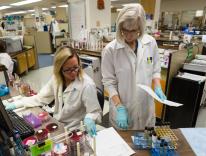One of Pope Francis’s biggest challenges is how to contend with the character of the current episcopate. Over the last few decades, the culture and the temperament of Catholic bishops have changed, and not just in the United States. But rather than viewing this in terms of the usual “liberal” vs. “conservative” dichotomy, there may be another way to look at the situation.
I recently discovered a brilliant article from 1982 by French sociologists Pierre Bourdieu and Monique de Saint Martin, titled “La Sainte Famille” (“The Holy Family”), which examines the relationship between the French episcopate and clerical power in the 20th century. The authors argued that in 20th-century France there were basically two kinds of bishops. One type, “les héritiers,” came from the Catholic “aristocracy,” not in the sense of being descended from earls or counts but in the sense of being sure of their inherited Catholic identity, able to wear it comfortably while mediating between modern theology and modern culture. Les héritiers typically studied “secular” disciplines in secular or non-Catholic institutions and didn’t feel compelled to over-emphasize their Catholicism to affirm themselves in their social network, in their cultural environs, or in the Church. They didn’t worry too much about having a good career in the Church because their social capital, their intellectual formation, and their emotional investment were not tied to the Church alone.
The second type of bishop—whom the authors refer to as “les oblats”—came from more humble backgrounds. Less confident of their Catholic identity and their role in society, they thus dedicated themselves to the institution of the Church, studying theology only, and only in an ecclesiastical setting. They were prone to making statements not only vis-à-vis modernity but also vis-à-vis the Church establishment. With Catholicism providing entry into a new social realm, les oblats became, according to the authors, “zealots” and administrators whose deep care for the institutional Church sprang from the fact that the institutional Church was almost all they had.
Bourdieu and Saint Martin detected a rapid change in the French episcopate between the 1930s and the 1970s, with social background shaping its culture, even if not in a determining way. It is a fact that the 20th century was the first century in modern Church history in which members of the European aristocracy (in the traditional sense of the term) no longer had privileged access to the episcopacy. Yet some remained, and some still do: Cardinal Christoph von Schoenborn of Vienna (one of the most prominent students of Joseph Ratzinger, a fine theologian, and now a backer of Pope Francis) is the descendant of one of the most prominent families in European Church history. His complete name is Christoph Maria Michael Hugo Damian Peter Adalbert Graf von Schönborn-Wiesentheid.
How to apply the analysis of Bourdieu and Saint Martin to the episcopate of today?
It was the authors’ view that les héritiers were in charge and more influential than les oblats. This is no longer true, not in France, or anywhere. Between the 1930s and the 1970s in France, the number of les héritiers declined while the number of bishops coming from the inner-city “petite bourgeoisie” rose. The intellectuals of the upper classes left the field to the lower class, in part because the actual job of being a bishop was no longer appealing. In this sense, the traditionalists’ accusation against Vatican II as “the French revolution in the Church” might have some merit in the context of the sociology of the episcopate.
The article also notes the role of Vatican II and the cultural changes it wrought in making possible—paradoxically—the rise of les oblats. The door to a new type of clergy was opened, a group that, less confident in its societal power and place, reacted against Vatican II and took a more confrontational stance against modernity. Once this group rose to power, its interpretation of Vatican II—different from that of les héritiers—became more prominent. This partly explains the “battle for meaning” (to quote the title of my book) over Vatican II in some countries, and the intra-Catholic debate over issues like marriage.
The analysis of Bourdieu and Saint Martin might also help in thinking about traditional “distinctions” between cradle Catholics and non-cradle Catholics. How might the theory of les oblates vs. les héritiers be applied, for example, to phenomena like the rise in adult vocations to the priesthood and conversions of prominent public personalities to Catholicism?
Finally, consider how the theory could be applied to the papacy. Over the last century, popes have come from both of the backgrounds Bourdieu and Saint Martin describe, with a long-lasting shift having taken place between Paul VI and John Paul II. The last of les héritiers, the aristocrats, were Pacelli (Pius XII) and Montini (Paul VI), while all the others were les oblats, traditional Catholics coming from humble families: Roncalli (John XXIII), Luciani (John Paul I), Wojtyla (John Paul II), and Ratzinger (Benedict XVI). Roncalli was “saved” from the traditionalism of his clerical formation and social upbringing thanks to a series of lucky turns in his life and career, especially his formation as a historian and his twenty years as a diplomat in Eastern Europe. Paul VI was an aristocrat who wanted to renew the episcopate after Vatican II and brought in “oblates” who ultimately went against its aims of renewal—something that continued with the bishops appointed by John Paul II and Benedict XVI. And what about Francis? In this respect Jorge Mario Bergoglio strikes me as very similar, once again, to John XXIII.
